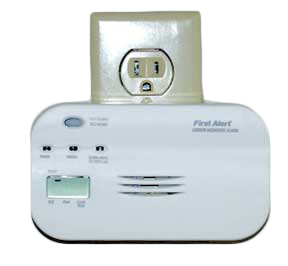Carbon Monoxide

Colorless, Odorless and Deadly
That is the description of carbon monoxide (CO), which can be formed when carbon based fuels such as natural gas, diesel or gasoline is burned incompletely. This can occur in water heaters, furnaces, gas stoves and car and truck engines. On average, 170 people in the US die per year from CO poisoning, and over 15,000 people suffered from CO exposure in 2007 according to US Poison Control Centers data. The best way to avoid CO poisoning is to have a carbon monoxide detector in your home.
Housing & Residential Services has installed CO detectors in all apartments that use natural gas. These detectors also have smoke detectors built into them as well so residents are safer. Housekeeping’s Building Maintenance Workers recently held a “team day” to replace batteries in the detectors and test the units to ensure they operated properly. The team day approach allowed the work to be completed much sooner, and included BMW’s from all over the department. The BMW team included: Sergio Diaz, Arturo Ortiz, Tony Castañon, David Velasquez, Manuel Muñoz, Joseph Gonzales, Vicente Chavez Perez, Martin Pereda, Victor Renteria, Isaias Gallo, Edgar Ocampo, Danny Candia, Jose Gonzales, and Juan Paniagua. Thanks Team!
Did you know? Never run a vehicle in a closed garage or bring a barbeque into your home. This can also lead to CO poisoning. Keep your family safe and be sure your home has a working smoke and CO detector and change the batteries at least once a year.


The detector on the left is in a UCSB Housing apartment, and the photo on the right shows a unit that people can buy at a local hardware store.